Adhesive and injectable hydrogel microspheres for NRF2-mediated periodontal bone regeneration
- PMID: 39788942
- PMCID: PMC11717957
- DOI: 10.1038/s41368-024-00340-w
Adhesive and injectable hydrogel microspheres for NRF2-mediated periodontal bone regeneration
Abstract
Regenerating periodontal bone defect surrounding periodontal tissue is crucial for orthodontic or dental implant treatment. The declined osteogenic ability of periodontal ligament stem cells (PDLSCs) induced by inflammation stimulus contributes to reduced capacity to regenerate periodontal bone, which brings about a huge challenge for treating periodontitis. Here, inspired by the adhesive property of mussels, we have created adhesive and mineralized hydrogel microspheres loaded with traditional compound cordycepin (MMS-CY). MMS-CY could adhere to the surface of alveolar bone, then promote the migration capacity of PDLSCs and thus recruit them to inflammatory periodontal tissues. Furthermore, MMS-CY rescued the impaired osteogenesis and ligament-forming capacity of PDLSCs, which were suppressed by the inflammation stimulus. Moreover, MMS-CY also displayed the excellent inhibitory effect on the osteoclastic activity. Mechanistically, MMS-CY inhibited the premature senescence induced by the inflammation stimulus through the nuclear factor erythroid 2-related factor (NRF2) pathway and reducing the DNA injury. Utilizing in vivo rat periodontitis model, MMS-CY was demonstrated to enhance the periodontal bone regeneration by improving osteogenesis and inhibiting the osteoclastic activity. Altogether, our study indicated that the multi-pronged approach is promising to promote the periodontal bone regeneration in periodontitis condition by reducing the inflammation-induced stem cell senescence and maintaining bone homeostasis.
© 2025. The Author(s).
Conflict of interest statement
Competing interests: The authors declare no competing interests.
Figures
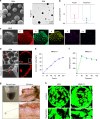
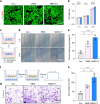
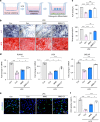
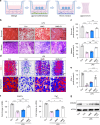
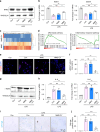
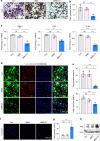
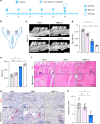
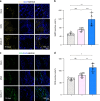
Similar articles
-
Evaluating the oxysterol combination of 22(S)-hydroxycholesterol and 20(S)-hydroxycholesterol in periodontal regeneration using periodontal ligament stem cells and alveolar bone healing models.Stem Cell Res Ther. 2017 Dec 6;8(1):276. doi: 10.1186/s13287-017-0725-9. Stem Cell Res Ther. 2017. PMID: 29208033 Free PMC article.
-
Treatment of inflammatory bone loss in periodontitis by stem cell-derived exosomes.Acta Biomater. 2022 Mar 15;141:333-343. doi: 10.1016/j.actbio.2021.12.035. Epub 2022 Jan 1. Acta Biomater. 2022. PMID: 34979326
-
Gingipain-Responsive Thermosensitive Hydrogel Loaded with SDF-1 Facilitates In Situ Periodontal Tissue Regeneration.ACS Appl Mater Interfaces. 2021 Aug 11;13(31):36880-36893. doi: 10.1021/acsami.1c08855. Epub 2021 Jul 29. ACS Appl Mater Interfaces. 2021. PMID: 34324286
-
UCHL1 Impairs Periodontal Ligament Stem Cell Osteogenesis in Periodontitis.J Dent Res. 2023 Jan;102(1):61-71. doi: 10.1177/00220345221116031. Epub 2022 Sep 12. J Dent Res. 2023. PMID: 36112902
-
Epigenetic regulation of osteogenic differentiation of periodontal ligament stem cells in periodontitis.Oral Dis. 2023 Oct;29(7):2529-2537. doi: 10.1111/odi.14491. Epub 2023 Jan 13. Oral Dis. 2023. PMID: 36582112 Review.
Cited by
-
Activation of the Nrf2 Signaling Pathway as a Therapeutic Strategy Against Periodontal Disease: A Narrative Review.Dent J (Basel). 2025 Jul 11;13(7):314. doi: 10.3390/dj13070314. Dent J (Basel). 2025. PMID: 40710159 Free PMC article. Review.
-
The Role of Nrf2 in the Regulation of Periodontitis, Peri-implantitis, Dentin Infection, and Apical Periodontitis.Biol Proced Online. 2025 Jul 2;27(1):23. doi: 10.1186/s12575-025-00285-2. Biol Proced Online. 2025. PMID: 40604430 Free PMC article. Review.
References
-
- Slots, J. Periodontitis: facts, fallacies and the future. Periodontol 200075, 7–23 (2017). - PubMed
-
- Deas, D. E., Moritz, A. J., Sagun, R. S. Jr., Gruwell, S. F. & Powell, C. A. Scaling and root planing vs. conservative surgery in the treatment of chronic periodontitis. Periodontol 200071, 128–139 (2016). - PubMed
-
- Graetz, C., Schorr, S., Christofzik, D., Dörfer, C. E. & Sälzer, S. How to train periodontal endoscopy? Results of a pilot study removing simulated hard deposits in vitro. Clin. Oral. Investig.24, 607–617 (2020). - PubMed
Publication types
MeSH terms
Substances
Associated data
- Actions
LinkOut - more resources
Full Text Sources
Molecular Biology Databases

